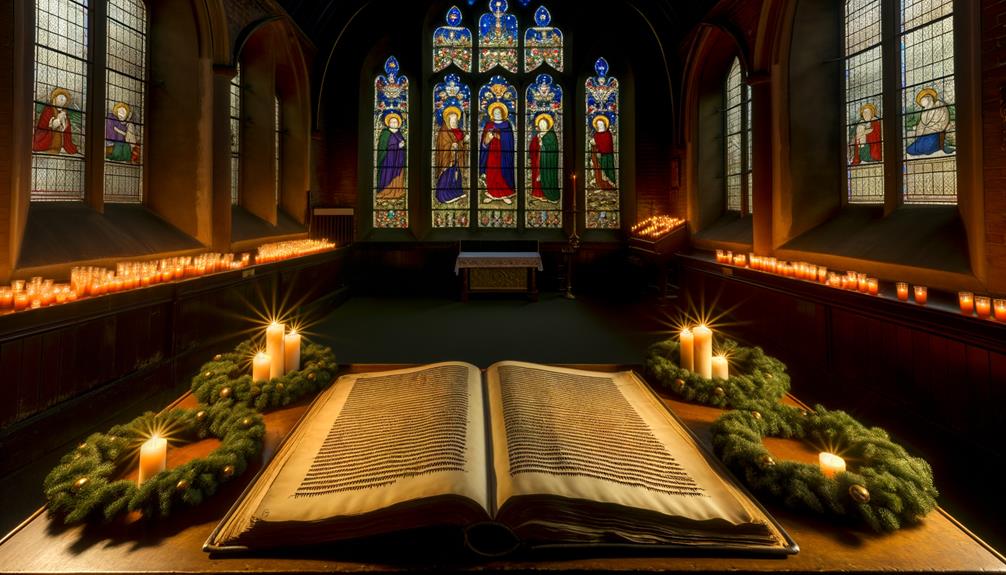What Is the Meaning of Advent in the Bible? Awaiting Messiah
Advent in the Bible represents a sacred time of anticipation and preparation, both for celebrating the nativity of Jesus Christ and anticipating His second coming. Rooted in early Christian traditions, its origins include fasting, prayer, and penance, as reflected in prophetic writings such as Isaiah 9:6-7 and New covenant passages like Matthew 24:30-31.
The Latin term ‘adventus’ underscores its theological focus on ‘coming.’ Symbolism includes the Advent wreath with candles for hope, peace, joy, and love. Understanding these elements provides deeper insight into how Advent shapes Christian liturgical practices and spiritual reflections.

Meaning of Advent in the Bible: Spiritual Significance and Hope
| Aspect | Description |
|---|---|
| Definition | “Advent” means “coming” or “arrival” |
| Biblical Focus | Anticipation of Christ’s birth and second coming |
| Key Scriptures | Isaiah 9:6, Luke 1:30-33, Matthew 24:44 |
| Spiritual Themes | Hope, preparation, repentance, and joy |
| Symbolic Insight | Marks the beginning of the Christian liturgical year and spiritual renewal |
Origins of Advent

The origins of Advent can be traced back to early Christian practices in the 4th and 5th centuries, where it initially served as a preparatory period for the feast of the Epiphany.
This period was marked by fasting, prayer, and penance, reflecting the early Church’s emphasis on spiritual readiness and purification.
Over time, as the liturgical calendar evolved, Advent came to be associated specifically with the anticipation of Christ’s nativity.
Scholarly interpretations suggest that the adaptation from Epiphany to Christmas mirrored the theological shift towards a more pronounced celebration of the Incarnation.
This transformation underscores the dynamic nature of early Christian liturgical practices, shaped by theological, cultural, and ecclesiastical developments.
Consequently, Advent’s origins reveal a complex interplay of tradition and doctrinal evolution.
Advent in Scripture

While the historical development of Advent reveals its evolving liturgical significance, scriptural foundations provide a deeper understanding of its theological roots.
The concept of Advent, derived from the Latin ‘adventus,’ meaning ‘coming,’ is biblically grounded in both Old and New Scriptures texts.
Prophetic writings, such as Isaiah 9:6-7, foretell the coming of a Messiah, emphasizing themes of hope and anticipation.
In the New Scriptures, passages like Matthew 24:30-31 and Luke 1:26-38 underscore the fulfillment of these prophecies through the birth of Jesus Christ.
Additionally, eschatological elements in texts such as Revelation 22:12-13 highlight the second coming of Christ, reinforcing the dual focus of Advent: celebrating Christ’s first arrival and anticipating His return.
Symbolism of Advent

In examining the symbolism of Advent, one finds rich imagery that encapsulates themes of preparation, expectation, and renewal within the Christian tradition.
The Advent wreath, with its four candles, each represents a week leading up to Christmas, embodying hope, peace, joy, and love. The evergreen wreath itself symbolizes eternal life, echoing the eternal kingship of Christ.
The liturgical color purple signifies penance and fasting, aligning with the introspective and preparatory nature of the season. Additionally, the single rose-colored candle, lit on the third Sunday (Gaudete Sunday), symbolizes joy amidst the penitential season.
Collectively, these symbols serve not merely as decorative elements but as profound theological signposts guiding believers towards a deeper understanding of the Incarnation.
Advent Traditions

Building upon the rich symbolism of Advent, various traditions have emerged that further embody the season’s themes of anticipation and reverence within the Christian community.
These practices serve not only as a means of preparing for the celebration of Christ’s birth but also as a reflective journey towards spiritual readiness.
Key traditions include:
- Advent Wreaths: Symbolizing eternal life, with each candle representing a specific aspect of the season.
- Jesse Trees: Depicting Jesus’ genealogy, fostering a connection to biblical history.
- Advent Calendars: Offering daily reflections or scriptures to enhance spiritual contemplation.
- Advent Hymns: Musical expressions that encapsulate the hopeful longing for the Messiah.
These traditions collectively enrich the Advent experience, deepening the community’s engagement with its profound theological roots.
Modern Observance

Examining contemporary practices, modern observance of Advent reveals a blend of traditional rituals and innovative expressions that resonate with today’s diverse Christian communities.
Traditional elements, such as the Advent wreath, candles, and calendars, continue to hold significance, symbolizing hope, peace, joy, and love. These practices are often accompanied by scriptural readings and prayers, fostering spiritual reflection.
Additionally, modern adaptations include digital Advent calendars and online devotional series, which cater to a technologically engaged society.
Communal activities, like charitable initiatives and social justice projects, also emerge, reflecting a broadened interpretation of Advent’s preparatory nature.
Consequently, the modern observance of Advent encapsulates both historical continuity and contemporary relevance, enriching the spiritual journey of believers in multifaceted ways.
Conclusion
The examination of Advent, from its origins to its modern observance, reveals a ritualistic tapestry rich in theological symbolism and historical tradition.
While some may view Advent as merely a prelude to consumerist festivities, the erudite observer discerns a deeper, rhythmic anticipation of the Incarnation.
Consequently, the essence of Advent lies not in gaudy commercialism but in its profound liturgical significance, offering a counter-narrative to contemporary secular distractions.
Indeed, the season beckons a return to contemplative spirituality amidst societal cacophony.






